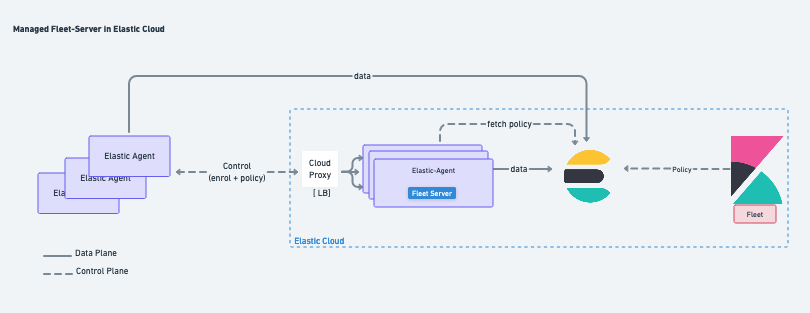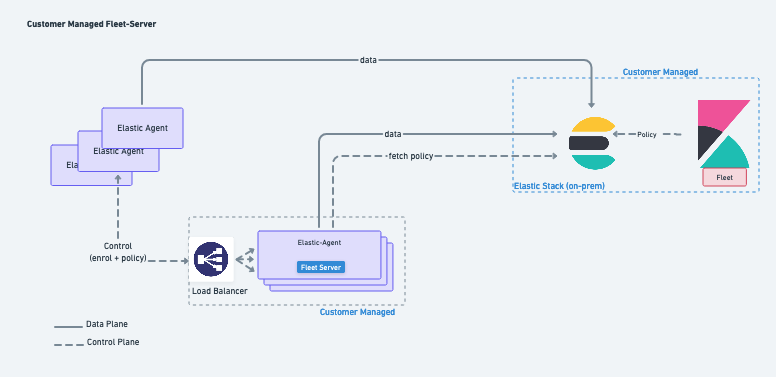Fleet Server deployment models
editFleet Server deployment models
editAdministrators deploying the Elastic Agent have a few deployment choices available to satisfy their organization’s requirements. Fleet Server can be deployed:
- On Elastic Cloud, as part of our hosted Elasticsearch Service, which is managed by Elastic, or
- On-prem and self-managed
Deployed in Elastic Cloud
editTo simplify the deployment of Elastic Agent, the Fleet Server can be provisioned and hosted in the Elastic Cloud. In this case, when the deployment is created, a highly available set of Fleet Servers are automatically deployed.
Administrators can choose the resources allocated to the Fleet Server and whether they want the Fleet Server to be deployed in multiple availability zones.
Once deployed on Elastic Cloud as a service, the full life cycle of the Fleet Server is managed by Elastic. Fleet Server is scalable and highly available with traffic ingress load balanced across multiple instances to satisfy the scale requirements.

Deployed on-prem and self-managed
editFleet Server can be deployed on-premises and managed by the user. In this deployment model, the administrator is responsible for Fleet Server deployment and lifecycle management. This mode of operation is predominantly chosen to satisfy data governance requirements or used in scenarios where the agents only have access to a private segmented network.
It’s recommended that the administrator provision multiple instances of the Fleet Server and use a load balancer to better scale the deployment.

Fleet Server High availability operations
editFleet Server is stateless. Connections to the Fleet Server therefore can be load balanced as long as the Fleet Server has capacity to accept more connections. Load balancing is done on a round-robin basis.
In the Elastic Cloud deployment model, multiple Fleet Servers are automatically provisioned to satisfy the instance size chosen (instance sizes are modified to satisfy the scale requirement). In addition, if you choose multiple availability zones to address your fault-tolerance requirements, those instances are also utilized to balance the load.
In an on-prem deployment, high-availability, fault-tolerance, and lifecycle management of the Fleet Server are the responsibility of the administrator.